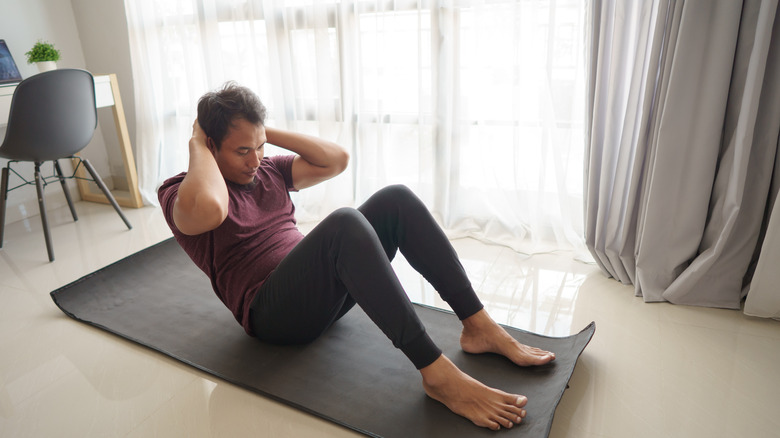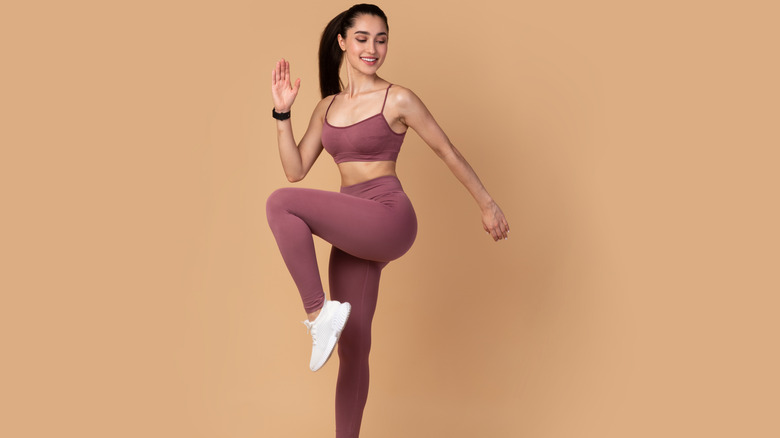What It Really Means When You Can't Do A Sit-Up
Have you recently tried to do a sit-up but struggled to get your back up off the floor to do one? What can help you do a sit-up?
According to Healthline, sit-ups are excellent exercises that work your abs, neck, chest, hip flexors, and lower back. Since sit-ups strengthen your core muscles, you'll also have better posture and a reduced risk for back injuries. Verywell Fit adds that sit-ups can also help increase your spine's flexibility, improve core stability, prevent back pain, improve core control, and enhance ab definition.
A sit-up is different than a crunch. When doing a sit-up, you're going to lie on your back and bend your knees and put your feet flat on the floor. Next, cross your hands across your chest, placing your right hand on your left shoulder and your left hand on your right shoulder. Next, engage your core, and lift your upper body off the floor all the way to your knees. Then, slowly and steadily lower yourself back into starting position. According to Healthline, beginners should be able to do 10 sit-ups.
Exercises to help you do a sit-up
Not being able to do a sit-up could mean you need to strengthen your core. According to Livestrong, if you have a weak core, you can experience back pain. No one wants that. If you can't do a sit-up because your feet come up off the floor, you may just need to adjust your form. Just move your feet further away and try again. You should be able to do a sit-up now.
Practice makes better. Start with practicing a sit-up as far as you can go. According to Live Healthy, practicing the sit-up can help you get there. Lift your upper body off the floor as high as you can go and repeat 20 times. Another exercise that will strengthen your core is the plank. Get into a pushup position with your flexed feet and hands on the floor. Hold for as long as you can, working up to 30 seconds at a time, with one to five reps.
Do some leg lifts. Stand with your hands on your hips and lift one leg out to the side until it's at a 90-degree angle or as high as you can go, and then slowly lower. Repeat with the other leg. Next up is knee raises. From the same starting position, raise your knee in front of you, lower it, and repeat with the other knee. Do eight to 16 reps one to three times.


